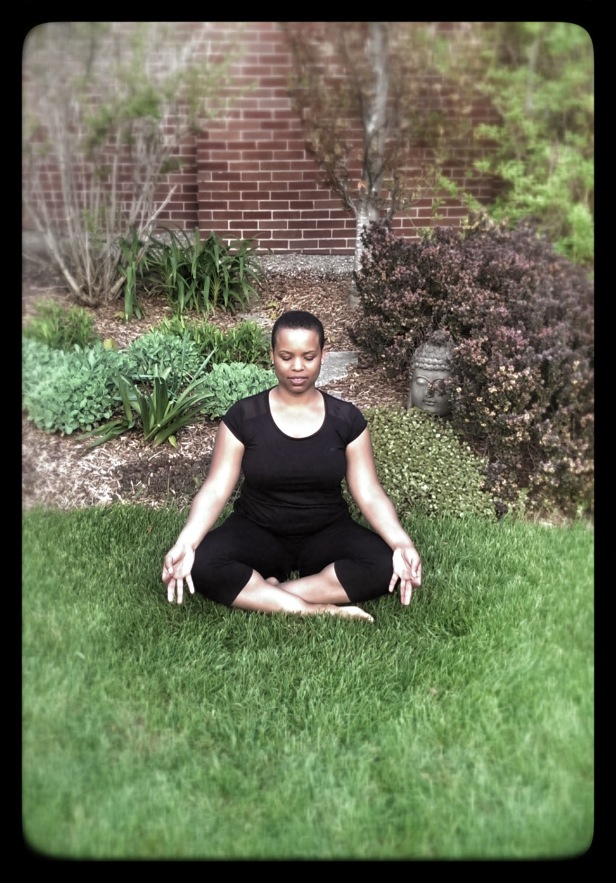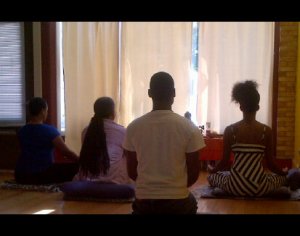Be careful how you are talking
to yourself because you are listening.
~Lisa M. Hayes
At the beginning of the month, Sangha decided our aspiration for study and practice in February would be (1) to dissolve the inner critic and (2) to awaken the voice of self-love.
We all have experienced the harsh self-defeating tones of an inner voice that chastises, doubts, belittles, and discourages us. We may struggle to hear the gentle voice of compassion that encourages, nurtures, assures, and reminds us of our strengths, gifts and possibilities.
This two-step process of dissolving self-criticism and awakening self-compassion invites us to first shine the light on the deep roots of that oppressive, self-defeating commander.
Can we see the seeds of fear, unworthiness, shame? Can we see all the hands that planted and tended them? These internal and external messages that feed and strengthen that critical voice?
To identify these embedded roots may also unveil a cycle of self-abuse that we easily trap ourselves in. As one practitioner pointed out, we recognize that we’re beating ourselves up and then reprimand ourselves to be better and nicer to ourselves! But how will such self-lecturing ever help us eliminate self-judgement when the critic thrives under abrasiveness?
Thich Nhat Hanh encourages us to “cradle” our suffering (in the form of anger, fear, pain, judgement etc.) as a mother would a child. So when the critic begins its denigrating rant, we neither silence nor strengthen it. We embrace it with a gentle acknowledgment, “Ahh! I see/hear the suffering.” We do not abandon ourselves, convinced that we’re being weak or wimpy. We whisper words of kindness to soothe that wounded voice. I understand. I am here for you. You are hurting. I love you.
Receiving such tenderness, the raging critic begins to soften and relax—to exhale its relief at being seen, heard and understood. Now there is room to sow and water seeds of compassion. We keep exercising the voice of compassion by speaking to ourselves in a hushed and soothing tones. We retrain our inner critic by filtering its skills of observation and analysis through the four gates of speech (a Sufi and Buddhist practice I wrote about in a musing about mindful communication in motherhood) asking, Is it true? Is it necessary? Is it helpful? Is it kind? We learn to assess our choices and decisions honestly, using words that nourish and support rather than berate us. With skillful effort, we develop a booming voice of wise and compassionate discernment.
So practice gently, relentlessly, and lovingly to awaken and constantly feed the voice of self-love. What’s been helpful for me in moments of self-doubt is to remember what another friend in sangha shared. Inspired by a story she’d heard about Apple co-founder Steve Jobs, she echoed his words of encouragement in a tender lilting voice: “Don’t be afraid, you can do it.”
To stop and communicate
with yourself
is a revolutionary act.
~Thich Nhat Hanh
Last week I shared a reading from Sandra Ingerman‘s Medicine for The Earth (a going-away gift I’d received from a friend when I left Brooklyn, NY in 2003), which provides a template for the transmutation—or ability, as Ingerman defines, to transform poisons in the body and environment—of negative, self-destructive communication to healthy, harmonious self communication:
Words and thought forms create a vibration that goes far into the universe, creating musical notes. We need to look at whether we send out harmonious notes into the universe, which in turn create harmony, or whether we send out disharmonious notes, creating chaos and illness. We call down the powers of the divine and call into being with our words…The seeds planted will decide what kind of plant grows.
We rarely pay attention to the power of the words we use. In our ignorance we end up calling into being a great deal of chaos and pollution. We do the same with our thought forms. If the divine created us in its own image and the divine is perfect, then we are perfect. If we say things about ourselves that is against our perfection, we move out of harmony with the divine inside and outside us, which can cause illness. For example, if you say that you are not good enough or if you believe you are not worthy, your words are out of harmony with divine creation.
You must work on bringing your words and thoughts back into a song of harmony. Without this harmony there can be no union. Without harmony and union there can be no transmutation. The universe sings glorious harmonious notes. Is the song of your life and beliefs harmonious?
EXERCISE [an excerpt]:
Imagine your life as a garden. What seed words do you want to plant, nurture, and watch grow? Choose your seed words carefully.
As you begin to notice the energy and vibration of words, be more conscious of the words you use in your conversations with others. Think about what you are calling down for yourself and others. Think about what plant will grown out of the words you planted.
To heal the earth through transmutation, you must speak to yourself and others with words that create a vibration of love, harmony, and union with the divine. With words you can decree that pollution be reversed. Parts of the formula for transmutation used here: Intention: Words create intention to heal or create illness.
Love: Words that have the power to heal embrace the vibration of love. Love heals.
Harmony: Harmonious notes sent out into the universe will create harmony reflected back to you in your life and the environment.
Union: Where there is harmony, there is union. Union is the energy behind transmutation.
Focus: You must have strong focus to create the intention to use healing words.
Concentration: It takes a great deal of concentration to be aware of the words you use in your self-talk and your conversations with others.
Imagination: You must be able to imagine the energy and vibration that is sent out with the words you use.
Related Musing
On Mindful Consumption
0.000000
0.000000










